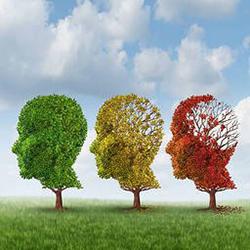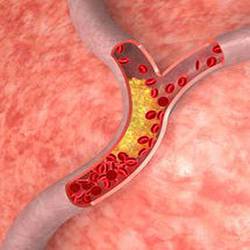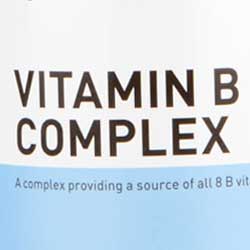Migraine / Headaches Causes, Treatment and Prevention
| Disorders
An important step in the prevention of migraines or chronic headaches [1] is keeping a diary to help identify as many triggers as possible. The most common dietary offenders include nuts, aspartame, monosodium glutamate (MSG), red wine and other alcoholic beverages (hangovers), caffeine intake or withdrawals (tea, chocolate, cocoa products), tyramine (some cheeses), nitrites / nitrates (salami, hot dogs, spinach, radishes, cabbage, lettuce, celery), sulfites, simple sugars / sweets, and a number of nutritional, or "natural" remedies
Non-dietary causes of headaches include those resulting from eye strain, lack of sleep or sleeping too long, carbon monoxide poisoning, low or high blood pressure, altitude changes (air travel), bright or flashing lights, strong odors (ink, news print, cleaning solvents), emotional stress / trauma, loud or low frequency noises, electromagnetic fields (cell or portable phone), fluorescent energy-saving light bulbs, pathogenic infections, pet allergies, and others.
Prescribed medications are another source of headaches, including the very ones used to treat a migraine headache, which after a while can trigger more headaches from a "rebound effect." (see segment on "Left-Sided vs Right-Sided Headaches" below).
To rule out brain tumor development, consult a physician if head pain patterns develop that are different from headaches experienced previously, are worsened by movement, or become resistant to medications.
Sinus / Allergy / Viral Headaches:
While any individual may develop an acute sinus headache secondary to a bout with a viral infection, those who suffer from chronic sinus headaches all year round frequently fall into a category that includes a tendency for a compromised immune system, low adrenals, allergies or food intolerances, and frequently low blood pressure. Subsequently, the best approach in the treatment of sinus headaches is trying to improve as many applicable components as possible, although compared to other types of headaches, those related to chronic sinus problems are one of the most difficult to deal with.
One reason is that environmental factors cannot easily be changed, which may include outdoor-air pollution, indoor pollution, an unfavorable climate, work-related pollutants, and also "social pollutants" such as tobacco smoke and various types of fragrances found in grocery and department stores, particularly around cosmetic or perfume counters - or shopping malls in general. Many individuals find that a vacation in a drier climate or pollen-free island makes a noticeable difference in the degree of suffering from mucus / sinus congestion and related headaches.
The two most prominent dietary factors which in prone individuals invite recurring viral headaches or chronic sinus headaches are Dairy Products and Simple Sugars (sweets) as a result of their weakening effect of the immune system (see also "Sugar & Glycemic Index"). Dairy products in particular have a reputation of being a major cause of mucus / sinus congestion, followed by Wheat products, and other mucous-forming beverage or food sources such as Chocolate, Cocoa, and Soy Products, which may have to be avoided in order to prevent the occurrence of sinus congestion and subsequent headaches.
Conventional allergy tests are only marginally accurate (too many false positives, or false negatives), so a rotational diet may have to be followed, during which time specific food groups are eliminated and then reintroduced so one is eventually able to come up with a list of offenders that should then be permanently eliminated from one's diet (see further below on actual Food Intolerance types-of Headaches).
In a majority of patients affected by sinus congestion and sinus headaches, cellular tests show Vitamin C and nickel levels to be considerably below normal. Vitamin A stores (on average) show below normal as well, which in itself is a common cause for bronchial or sinus mucus congestion. When supplementing Vitamin A, females of child-bearing age should not ingest amounts larger than 3000 IU / day because of its potential to induce birth defects in the fetus. Excessive intake of Vitamin A can also cause headaches! Since iodine helps to thin / reduce mucus, it would be worthwhile to check its status, and one's thyroid function also.
The symptoms of airborne allergies (hay fever) can oftentimes be lessened with allergy shots, or specific supplements or remedies that include Vitamin A + C, mixed carotenoids, quercetin, and possibly bee pollen, which should be harvested from local hives and initially used with caution to avoid an allergic reaction. Herbs such as nettle, fenugreek, willow bark, eyebright, feverfew, may also be helpful, while some individuals report success using homeopathic remedies such as potentized echinacea, euphorbium, pulsatilla, lachesis, allium cepa, bryonia, and thuja. While the herb Cat's Claw is not particularly well-known for the treatment of sinus headaches, it is an effective remedy for that, and individuals with a compromised immune system.
Many patients suffering from sinus congestion and related headaches present with blood pressure readings that are often on the low side. Considering that sinuses get more congested overnight, and blood pressure can drop even more during sleep, it comes as no surprise that vigorous exercise is one of the most effective counteractive measures anyone can undertake to help drain sinuses, and improve blood circulation through the sinuses. This of course is not always easy, since many individuals presenting with sinus headaches and hypotension also suffer from chronic fatigue.
Another option is nasal irrigation with a saline solution, sipping hot, steamy beverages, and/or regularly adding some garlic and hot spices (cayenne pepper), or horseradish, to thin mucus and make it less sticky.
Garlic may also be a worthwhile remedy when dealing with Fungal Sinusitis, as could be olive leaf extract or barberry for their antifungal properties (barberry is contraindicated in pregnancy).
Many people find volatile oils helpful when applied topically on the forehead or scalp (Chinese Tiger oil, or Kwan Loong oil, which is a stronger version), and/or used internally (oil of oregano, eucalyptus). The Nosode complex "Sinusitis" available from the German Pascoe company has been proven to be a beneficial remedy in controlling chronic sinusitis. It may be available through some naturopathic or complementary practitioners. Needle acupuncture, or particularly needle-less electro-acupuncture are also very effective treatment options for sinus congestion and related headaches. Sinus drainage starts to take place already during, or shortly after a treatment and may continue for hours, or even days in heavily-congested cases.
Low Blood Sugar Headaches:
If treated in time, symptoms are fairly easy to deal with, since they simply entail consuming almost any type of food to raise / normalize blood sugar levels. Time is of the essence, as just like with other types of headaches, the longer one waits to initiate counteractive measures, the less successful the results will be. Many individuals who wake up with a headache will find that avoiding simple sugars before bedtime may be all it takes to resolve the problem, or by only consuming protein food sources with the latest meal of the day. For details on correcting any tendencies for hypoglycemia / low blood sugar through diet or supplemental remedies, see "Hypoglycemia".
Low Stomach Acid Headaches:
Individuals suffering from headaches related to low stomach acid have the option to resolve not only the headaches, but also most of the other symptoms associated with low acid, such as bloating, or heartburn like symptoms following a larger meal. Treatment options include lemon or lime water, apple cider vinegar, or supplementing a digestive aid containing Glutamic acid + Betaine + Pepsin with every larger meal. Bromelain (which is blood-thinning!), would be a better choice if one suffers from acid reflux and low stomach acid.
Acidophilus, or any of the 'Probiotic' friendly bacteria remedies could also be taken on a regular basis, with the best time being right at bedtime. This assures reseeding of the "good" bacteria overnight, which will subsequently lessen any early morning symptoms such as nausea or headaches that are experienced by some of those suffering from low stomach acid. Since the Helicobacter Pylori bacteria is a common cause for low stomach acid (as well as ulcers, cancer, asthma, gum, and heart disease), it may be worthwhile to be tested for a possible infection, and if found positive, undergo appropriate therapy. (see also "H. Pylori").
Cluster Headaches:
Cluster headaches are very severe one-sided headaches, affecting usually the temple / eye area, and - with some exceptions - typically last less than one hour, or sometimes even just for a few minutes. They tend to occur almost daily for a few weeks, and then stop as suddenly as they started.
Patients with cluster headaches share common cellular chemistry: Depending on the side of the attack, there is generally a combination of very low magnesium, very high sodium, and very high nickel for the one side, and very low calcium, very high phosphorus, and very high cobalt for the other side.
Excessive levels of nickel and cobalt share both vasoconstrictive properties, so in the first example (which is more common), the treatment of choice would consist of a high intake of magnesium, a high intake of Vit E, and a larger amount of any adjunct supplement such as Vitamin B2 to help lower sodium.
The other example would require a high intake of calcium, a high intake of pangamic acid (Vitamin B15), and usually a larger amount of pantothenic acid (Vitamin B5), unless the patient's chemistry dictates otherwise.
In one particular experience with a patient who had a cluster headache attack in Dr. Ronald Roth's waiting room, Dr. Ronald Roth applied an ice pack on the affected side, and the attack was aborted in seconds. After mentioning that incidence to other patients suffering from cluster headaches, some of them reported having since had similar success, and they now always make sure to have some ice cubes at hand.
Tension Headaches:
While symptoms resulting from spinal alignment problems, poor posture, or unconsciously tensing muscles in the neck or shoulder area may benefit from chiropractic intervention, there are also organic or chemical factors that are capable of precipitating a general uptight or tense disposition, in which case nutritional remedies with muscle relaxant properties may be considered. The two most important minerals to use for that purpose are calcium and magnesium, while a B-Vitamin Complex should used with caution, or avoided entirely since higher amounts encourage muscle tension and a "stressed-out" emotional disposition.
Migraine / Vascular / Hormonal Headaches:
In contrast to other types of headaches, classic migraines [2] or vascular headaches have the best potential for an actual cure, since they are always related to abnormal liver functions (particularly abnormal iron and manganese levels or ratios), which when rectified, will permanently resolve the disorder. Dr. Ronald Roth had many patients who have been completely migraine-free for over twenty years following corrective measures to normalize liver functions through nutritional means or remedies.
Iron and manganese comprise an interdependent mineral pair which affects various liver functions (and vice versa), including hormonal balance, glycogen metabolism, red blood cell / hemoglobin production, and others. In contrast to below-normal levels of iron or manganese, which can provoke Vascular Headaches, elevated levels can trigger classic migraine symptoms, with the Iron / Manganese Ratio determining the left or right sidedness of a headache.
In the event of elevated iron, any iron antagonist such as zinc, magnesium, Vitamin B2 or E - whichever is the most compatible, will effectively relieve the side-specific migraine headaches associated with iron. Donating blood is another option, which will also lower Blood Pressure in those where BP is related to high iron levels.
The opposite headache side responds to reducing manganese, whose level can be lowered through calcium, potassium, Vitamin B6 (with caution), or Vitamin C - whichever ones match a patient. Lowering manganese will also improve the liver's ability to regulate estrogen, where a higher mean average is a common trigger for migraines that are associated with the menstrual cycle, including high estrogenic-types of PMS. Most properly diagnosed migraine cases involve congestive liver disease of one or both large central liver lobes (implicating elevated iron and/or manganese), making the herb Milk Thistle an ideal addition to any other remedy chosen.
In contrast to migraines, Vascular Headaches require the opposite treatment approach, where low levels of iron or manganese require their supplementation. This is usually done by taking the chelated version of the mineral in the 15 - 50 mg range/day, until corrected. Headaches developing as a result of low or diminishing estrogen levels, i.e. menopausal, or low estrogenic-types of PMS, amenorrhea (failure to menstruate), or iron- deficiency anemia, fall into this same category. In addition to raising their levels, it is equally important to normalize the iron / manganese ratio to subsequently prevent any one-sided headaches (or migraines) from developing in the first place.
Ocular Migraines:
Ocular migraines are precipitated by an Aura and entail an abnormal Iron / Manganese Ratio, where the lower of the two trace elements will determine on which side the migraine will later take place. On average, there is about a 30 +/- minute warning, during which time there may be zigzagging visual patterns, hazy or blind spots, or partial to complete loss of vision in one eye.
While an ocular migraine may develop on the same side where the aura took place, with most people it will develop on the opposite side, so it is important to make notes that future migraines - precipitated by an aura - may be shortened or prevented by using appropriate supplements (see "One-sided Headaches" below).
Total prevention however is only possible when a patient does not also suffer from regular / classic migraines, because with both headaches being on opposite sides, the supplements needed to prevent the one type will encourage the development of the other type. In those cases, it is best to adjust one's supplements to prevent the one type that is most commonly experienced, although it is still possible to dramatically reduce the frequency of both - an ocular and classic migraine - by fine-tuning any supplements taken, and trying to avoid any known migraine triggers.
For instance, if someone is prone for right-sided headaches, and one is using "Group A" supplements for prevention as listed below, and if one develops a right-sided aura, one could immediately take 2-300 mg of Vitamin B2 (vitamins work faster than minerals) to shorten, or prevent an ocular migraine altogether that will otherwise develop on the left side after the aura disappears. Any supplements in "Group A" can be used, but depending on the rest of a patient's chemistry, some work better or faster than others. For a left-sided aura and right-sided ocular migraine, one takes the opposite approach by using supplements from "Group B."
Food Intolerance / Food Sensitivity / Food Allergy Headaches:
Many practitioners categorize food intolerance / allergy-types of headaches as part of the migraine group, however outside of an occasional enzyme deficiency, they are not treated by using nutritional remedies to normalize organic or chemical problems. The simplest and most effective way to deal with these types of headaches is to avoid the foods or beverages that one is sensitive to, but if necessary, these headaches - if one-sided - can be dealt with the same way as any other left or right-sided headache described below.
In contrast to air-borne allergies (hay fever) where allergy shots may be helpful, food allergies would have to be dealt with by using a time-consuming immunotherapy or sublingual therapy of swallowing a potentized, and increasingly less diluted fractions of the foods one is allergic to. Once a tolerance is built up, which can take a year or longer, the protocol has to be maintained, otherwise food sensitivities or allergies quickly return.
While some people experience a headache within minutes of ingesting an offending food or beverage (which usually happens more so after being exposed to perfumes, floral aromas and fragrances, or tobacco smoke), most individuals wake up with, or develop a migraine headache the following day after consuming common triggers such as various cheeses, cashews, walnuts, peanuts, eggs, seafood, chocolate, oranges, tomatoes, potatoes, onions, strawberries, bananas, grapes, corn, cane sugar, alcoholic beverages, and so forth.
The Elimination Diet uses a type of protocol where an individual starts with a one day fast, and then begins to reintroduce various food items every day, whereby the types of foods causing headaches or any other medical symptoms are then permanently eliminated.
The Rotational Diet simply rotates various food groups, assuming that symptoms / reactions can be kept to a minimum by not consuming the same offending foods on a frequent basis. If a particular food from a food group stands out as a cause for headaches, it may then also be eliminated.
There are several variations to the above methods, whereby some people find that eliminating specific Food Groups on a trial basis offers the most practical and least interruptive approach. In other words, one follows a conventional diet, but then begins to avoid foods of the nightshades group, or grains, citrus, dairy, legumes, meats, etc. - in no particular order - for a specific time period:
- Nightshades (potatoes, tomatoes, chili peppers, garden peppers, eggplant, paprika),
- Root Vegetables (carrots, beets, turnips, radishes, rutabagas, garlic, onions),
- Cruciferous Vegetables (Brussels sprouts, broccoli, cabbage, cauliflower),
- Gourd Vegetables (squash, cucumber, pumpkin, zucchini),
- Leafy Green Vegetables (lettuce, spinach, kale, chard),
- Legumes (peanuts, soybeans, all other beans, peas, lentils),
- Citrus (lemons, limes, oranges, grapefruit, tangerines, tangelos),
- Fruits (apples, pears, bananas, plums, cherries, peaches, apricots, grapes, pineapples, olives),
- Berries (strawberries, raspberries, cranberries, blueberries, gooseberries, blackberries),
- Dairy (milk, ice cream, sour cream, cheese, yogurt - and other dairy-containing sources),
- Meats (beef, pork, lamb, chicken, turkey),
- Fish (salmon, tuna, sardines, herring, trout),
- Shellfish (lobster, shrimp, oyster, mussel),
- Seeds (pumpkin, flax, sesame, sunflower),
- Nuts (almonds, walnuts, pistachios, cashews, filberts / hazelnuts, Brazil and Macademia nuts),
- Grains (wheat, barley, rye, corn, millet, oats, rice, buckwheat, amaranth, spelt),
- Various (eggs, mushrooms, spices, alcohol, tobacco, sugar, honey, tea, cocoa, oils, yeast).
Once an offending food group is isolated, the same approach can be applied to single items of the same group, although in some - but not all cases, an entire food group may be responsible for causing headaches. Keeping an accurate diary is most important to not only help isolate any problem foods, but also additives such as sulfites, MSG, nitrites / nitrates, or other common offenders such as caffeine or tyramine, and to not miss any possible non food-related triggers such as lack of sleep or sleeping in too long, exposure to electromagnetic fields (cell or portable phone), fresh news print (magazines, news-papers), eye strain, pet allergies, and an intolerance of natural / nutritional remedies, supplements, or prescribed medications.
Headaches - or any other symptoms related to food sensitivities, intolerances, or allergies generally clear in about 4 - 5 days, so any particular food group should be avoided for at least a week to 10 days. This also applies to salad dressings, ketchup, baked goods, etc..., that contain any suspect food sources.
The Pulse Test is another method that may be applied to isolate suspect foods or inhalants, whereby the pulse is first taken upon getting up in the morning to get an average pulse before doing any daily chores, or before getting in contact with soaps or toiletries. The pulse is taken again before a meal (ideally using the food groups above), and then at 10 minute intervals a few times after a meal. Comparisons are made of an increase in the pulse rate between those meals that one is - and the ones one is not sensitive to.
Suspect foods generally result in a pulse rate that is higher compared to tolerated food sources. This varies from one individual to another, but can range from an increase of less than 10 beats a minute to more than 20 beats, whereby more allergenic foods may trigger noticeable palpitations as well.
Pancreatic Enzymes help reduce many allergic reactions in those individuals who don't produce sufficient amounts, so using either basic Pancreatin tablets, or a Digestive Enzyme Complex may be helpful in those cases. While pancreatic enzymes are usually well tolerated, they cause an allergic reaction (i.e. skin rash) or stomach upset in a small percentage of individuals, and then only when larger amounts are taken. Enzymes from animal sources tend to be more effective, but require a higher, more alkaline pH to be active, while plant enzymes work in a large 2-14 pH range, but may be less effective for organic diseases (pancreatitis, cancer).
Nutritional Remedies that cause, reduce, or interact with Migraines or Headaches:
Too high or too low: Vitamin A, iron, manganese, magnesium, calcium, sodium.
Too high: Vitamin E, copper. - Too low: Vitamin Vit B1, Vit B2, Vit B6, Vit B15, Vitamin C, folic acid.
Optional Herbs: Feverfew - some migraines, Butterbur - some migraines, Cat's Claw - "Group A" sinus and general headaches, Silica - some headaches, Turmeric - "Group B" migraines, general headaches.
Left-Sided Headaches vs Right-Sided Headaches
One major advantage of using nutritional remedies over prescription drugs or OTC drugs, is their unlikelihood of causing rebound headaches, or user dependency. Dr. Ronald Roth had spent several years categorizing minerals and vitamins by their action on the body's pH, oxygen metabolism, and cranial / vascular effect, to help prevent or control One-Sided Headaches or Migraines.
In the chart below, supplements are divided into Groups A and B, whereby one group will help headaches that are on the left side, and the other group will help headaches that are on the right side. About half of the population can use Group A for left-sided headaches, and Group B for right-sided headaches. For the rest, it is the other way around (Group A is for right-sided, and Group B for left-sided Headaches).
* Larger amounts of Vitamin B6 or copper should not be taken on an ongoing basis.
One can either use trial and error to determine what group applies for an individual, or previous experience with for instance caffeine-containing beverages might be of help --- of whatever effect they had in improving or worsening one's headache.
Vitamins work quicker (10 - 20 min), while minerals take a bit longer (30 - 60 min). Any combination can be used, as long as they are part of the same group, and as long as they do not interfere with the rest of one's chemical profile --- i.e. Vitamin B1 and iron raise sodium, so they should not be taken by anyone who has problems with high sodium retention.
If one is taking vitamins and minerals every day, then on days where one feels a headache coming on, the ones in the wrong group should not be taken that day, since they would worsen the headache, or prevent the other group from being effective enough to relieve the headache. For the same reason it is usually better for a headache-prone person to take all daily supplements later in the day, as by then, most people will have had signs of an impending headache.
Example 1: Assuming a person is on a vitamin / mineral program consisting of chromium, manganese, iron, Vit B12 and magnesium, and that person is the type of needing to take Group B for a left-sided headache. Assuming further that this person develops a left-sided headache, only Vit B12, manganese and magnesium should be taken that day only, but not iron and chromium. If the headache is severe, the actual amounts taken can easily be increased to the amounts shown on the chart, and for instance Vitamin E could be added for additional results.
Example 2: Assuming a person is on a vitamin / mineral program consisting of PABA, potassium, Vitamin C, zinc, choline and lecithin, and that person (whose left-sided headaches correspond to Group A) develops a right-sided headache, - only zinc, PABA, and choline should be taken that day, but not Vit C, potassium, and lecithin. As in the first example, extra supplements of the corresponding Group B could be added at higher amounts to help the headache, including some baking soda in water if an acidic stomach accompanies the headache. If headaches always occur on the same side, then specific supplements from the corresponding group can then be used on a daily basis to prevent them from developing in the first place.
Example 3: When coming down with a viral infection, one of the most effective nutritional supplements to take are Vitamin A and Vitamin C. Since the accompanying headache usually corresponds to Group A, taking Vitamin A and C will help both, the viral infection and the headache. However, depending on the type of virus caught, the headache may occasionally be experienced on the opposite side, so if Vitamin A and C were used, one would prolong or even worsen the headache. One way to overcome that problem is to use another anti-inflammatory agent, such as turmeric, which has a powerful headache-shifting effect from Group B to Group A. Subsequently, the headache and viral infection will be taken care of at the same time.

 Manganese may help with some symptoms of Parkinson's disease such as muscle rigidity and twitching...
Manganese may help with some symptoms of Parkinson's disease such as muscle rigidity and twitching...
 Research shows that phytosterols such as beta-sitosterol may help normalize the function of natural killer cells and T-helper lymphocytes...
Research shows that phytosterols such as beta-sitosterol may help normalize the function of natural killer cells and T-helper lymphocytes...
 Iron deficiency may be suspect with some forms of ADHD. 84% of children with ADHD were found to have abnormally low levels of ferritin...
Iron deficiency may be suspect with some forms of ADHD. 84% of children with ADHD were found to have abnormally low levels of ferritin...
 A high intake of B Vitamins can trigger heart palpitations, HBP, major complications in patients with congestive heart disease...
A high intake of B Vitamins can trigger heart palpitations, HBP, major complications in patients with congestive heart disease...